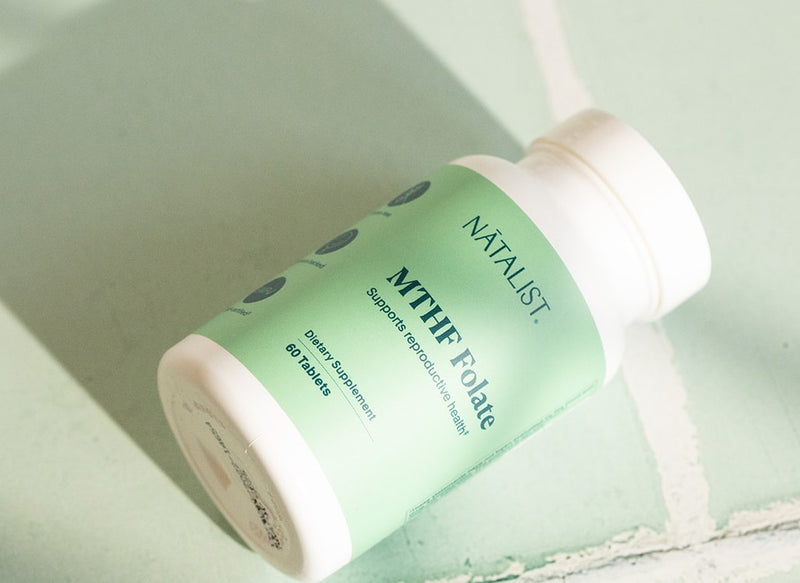How to Increase Iron Levels Quickly

By Dr. Kenosha Gleaton, OBGYN
Why Is Iron Important?
Iron is a vital mineral that the body uses for growth and development. Our red blood cells are highly dependent on iron, which allows the blood to carry oxygen throughout the body. [1] When someone doesn’t consume enough iron, they’re at risk of iron-deficiency anemia and a host of other negative side effects. [1] Iron is also a necessary nutrient for our immune system. Lack of iron can be especially dangerous for those that are pregnant, elderly, and immunocompromised. If a pregnant person doesn’t consume enough iron, they may be putting themselves and their baby at risk of preterm delivery, low birth weight, and developmental problems. [2]
Risk Factors for Iron Deficiency
Inadequate iron intake is surprisingly common in the United States and is especially prevalent in certain groups, including pregnant people, infants or young children, those with heavy menstrual bleeding, frequent blood donors, people with cancer, people with heart failure, and those with gastrointestinal disorders. [1] Why are these groups at a higher risk of iron deficiency? The short answer is that pregnancy, heavy menstrual periods, frequent blood donation, and certain types of cancer can impact iron levels as a result of heavy blood loss or increased blood volume. [1] Heart failure and GI disorders may impact iron levels as a result of malabsorption or poor nutrition. [1] Infants and young children undergo rapid growth and may be born with low birth weight or to a mother with iron deficiency, increasing the risk of inadequate iron intake. [1]
Symptoms of Low Iron
There are numerous signs and symptoms experienced by those that do have low iron levels or are experiencing iron deficiency. A few common signs include [3]:
- Fatigue
- Weakness
- Difficulty concentrating
- Pale skin
- Chest pain
- Headache
- Cold hands and feet
- Poor appetite
- Brittle nails
- Inflammation or soreness of the tongue
If you are experiencing any strange symptoms, be sure to speak with your healthcare provider directly.
Iron Absorption
What many people may not realize is that iron levels are highly dependent on iron absorption. Iron absorption can vary greatly depending on how much iron the body is storing, what foods you’re eating, and other factors. A healthy body absorbs close to 20% of available iron in a typical diet that includes animal foods, and about 10% when eating a vegetarian diet. [4] There are ways to increase iron absorption by changing your dietary habits.
How to Increase Iron Levels
If someone is iron deficient or has low iron levels, it’s important that they follow a provider-recommended regime to replenish their iron levels. Unfortunately, increasing iron levels isn’t always a quick fix. With appropriate treatment methods, it can still take as long as a year for some people to achieve healthy iron stores. [4] Blood tests can help track progress to ensure that dietary changes and iron supplements are working as they should. Here are some tips for increasing iron levels.
Iron Rich Foods
Many people can consume an adequate amount of dietary iron through healthy eating and a balanced diet. Many foods, such as animal products, fish, vegetables, whole grains, fortified products, and others contain iron. Some of the richest sources of iron include [5]:
- Beef
- Chicken
- Clams
- Eggs
- Lamb
- Lentils
- Tofu
- Beans
- Enriched grain products
- Figs
- Dates
- Broccoli
- String beans
- Dark leafy greens
If you are a vegetarian or vegan, you may want to speak to your provider about your low iron levels and how to consume enough iron. Read more about iron supplements for vegetarians in our blog.
Iron Supplements
Outside of a balanced diet, there are also many supplements that contain iron. Whether you’re looking for a standalone oral iron tablet or a multivitamin, there are many options for iron supplementation. According to the Food and Nutrition Board, adult males need 8 mg of iron a day, and adult females need 18 mg of iron a day. [1]
If you’re hoping to conceive or you’re pregnant, the American College of Obstetricians and Gynecologists (ACOG) recommends at least 27 mg of iron per day, which can be obtained through a balanced diet of iron rich foods for pregnancy as well as a comprehensive prenatal vitamin. [6] Make sure that your prenatal vitamin pills contain iron, or look into taking prenatal gummies with iron.
Types of Iron
Not all dietary supplements are created equal. Different types of iron supplements have different formulas, which can contain different amounts of high-purity iron. High-purity iron is the form of iron best absorbed by the body. A few different forms include carbonyl, polypeptides, ferrous, etc. Carbonyl iron is a high purity form of iron that is also less likely to cause an upset stomach. [1]
What Helps Iron Absorption?
As mentioned, certain foods and drinks can impact how much iron the body is absorbing. Some tips for boosting iron absorption include [1,4]:
- Increase acidity: Iron absorption is best in an acidic environment, so taking iron supplements or eating iron-rich foods should either be done on an empty stomach or with acidic foods such as citrus fruits. [7]
- Cook your veggies: Many non-animal sources of iron (like broccoli) provide more iron when cooked. If you’re hoping to absorb as much iron content as possible from your vegetables, try cooking them rather than eating them raw.
- Mix animal and plant food sources: If you are not eating a vegetarian or vegan diet, you may benefit from including both animal and plant sources of iron together. Chicken, lamb, beef, and fish with beans, lentils, whole grains, etc.
- Consume vitamin C and vitamin A: The body absorbs iron from plant sources more easily when consumed with vitamin C. Vitamin A is also helpful for releasing stored iron, so ensuring adequate amounts of these nutrients is extremely important for iron absorption. Vitamins A and C are found in leafy green vegetables, tomatoes, bell peppers, fruit, fish oils, etc.
- Avoid certain foods and drinks: There are some foods that may actually reduce iron absorption. It’s important to limit these products when eating high-iron meals or taking an iron supplement: bran, fiber, tea, coffee, wine, and soy protein.
Increase Iron Levels With Natalist Products
Whether or not you’re navigating a fertility or pregnancy journey right now, iron is an essential mineral that the body needs for proper functioning. Get all of the necessary vitamins and minerals you need with Natalist multivitamins, or opt for a standalone iron supplement. If you have more questions about nutrition, fertility, or pregnancy, check out the Natalist blog.
Dr. Kenosha Gleaton is board-certified in gynecology and obstetrics and is the Medical Advisor of Natalist. She received her MD from MUSC and completed her residency at Carolinas Medical Center in Charlotte, NC.
Dr. Gleaton is passionate about women, youth, and mentoring. She is a Scrubs Camp instructor, a program to increase student entry in healthcare, and serves as a Compassion International adoptive parent. She is also a member of the American College of Obstetrics & Gynecology, the American Association of Gynecologic Laparoscopists, and the American Association of Professional Women.
References:
- Iron- Fact Sheet for Health Professionals. NIH. June 15 2023. URL
- Anemia During Pregnancy. Cleveland Clinic. May 26 2022. URL.
- Iron deficiency anemia. Mayo Clinic. January 2022. URL.
- Iron and iron deficiency. Better Health Channel. June 2022. URL.
- 52 Foods High In Iron. Cleveland Clinic. March 2023. URL.
- Nutrition During Pregnancy. FAQ001. American College of Obstetricians and Gynecologists. June 2023. URL.
- Teucher B, Olivares M, Cori H. Enhancers of iron absorption: ascorbic acid and other organic acids. Int J Vitam Nutr Res. 2004;74(6):403-419. doi:10.1024/0300-9831.74.6.403
Reach Out, We're Here
Have questions about your order or products? For the speediest answer, check out our FAQ section. Need something else? Come find us below.
Please keep in mind our regular business hours; Monday-Friday, 9am-5pm CT.
Customer Support
support@natalist.com
Press Inquiries
media@everlyhealth.com
Business & Partnerships
team@natalist.com
Affiliates + Influencers
team@natalist.com
Job Openings
Careers Page
























